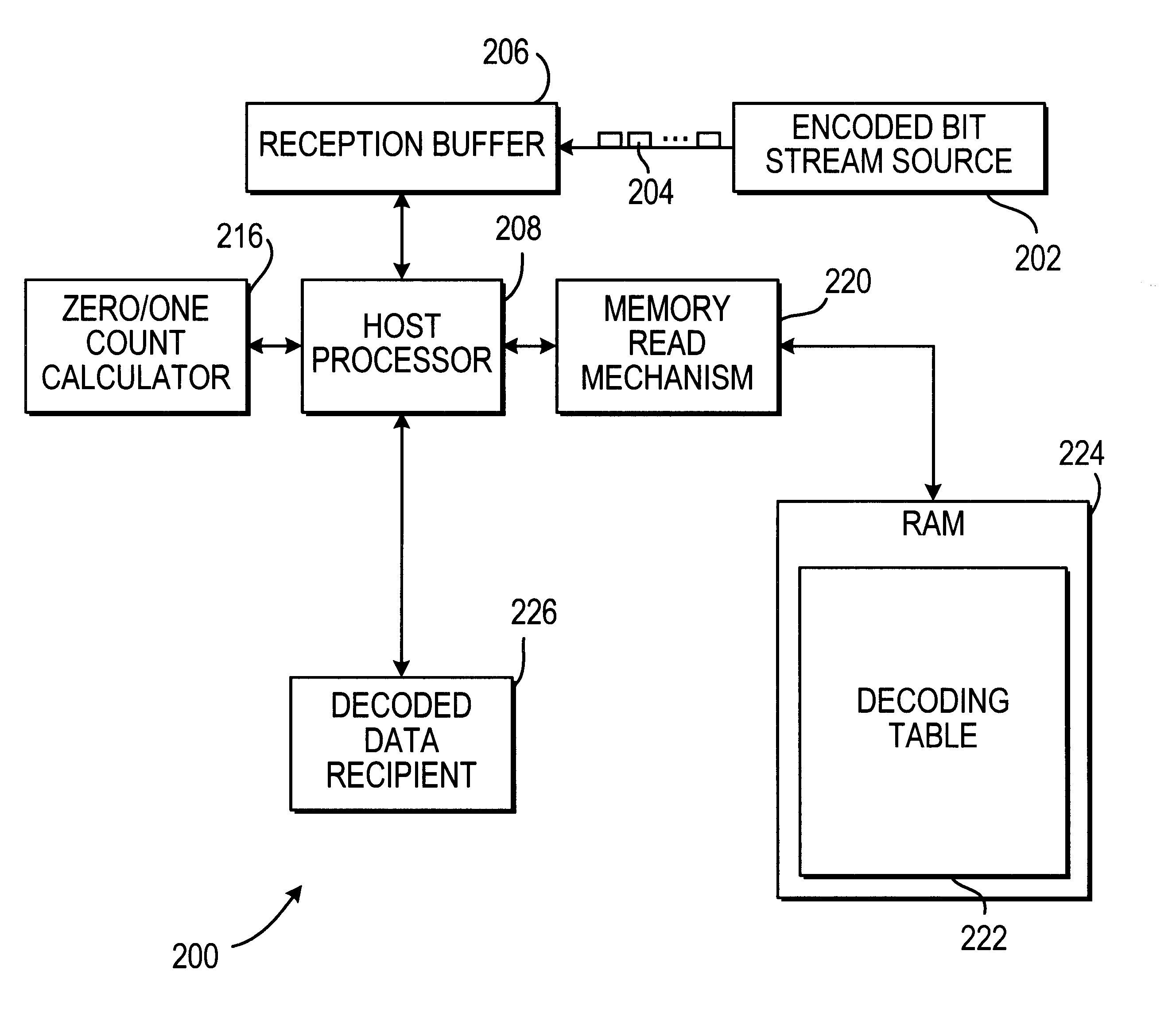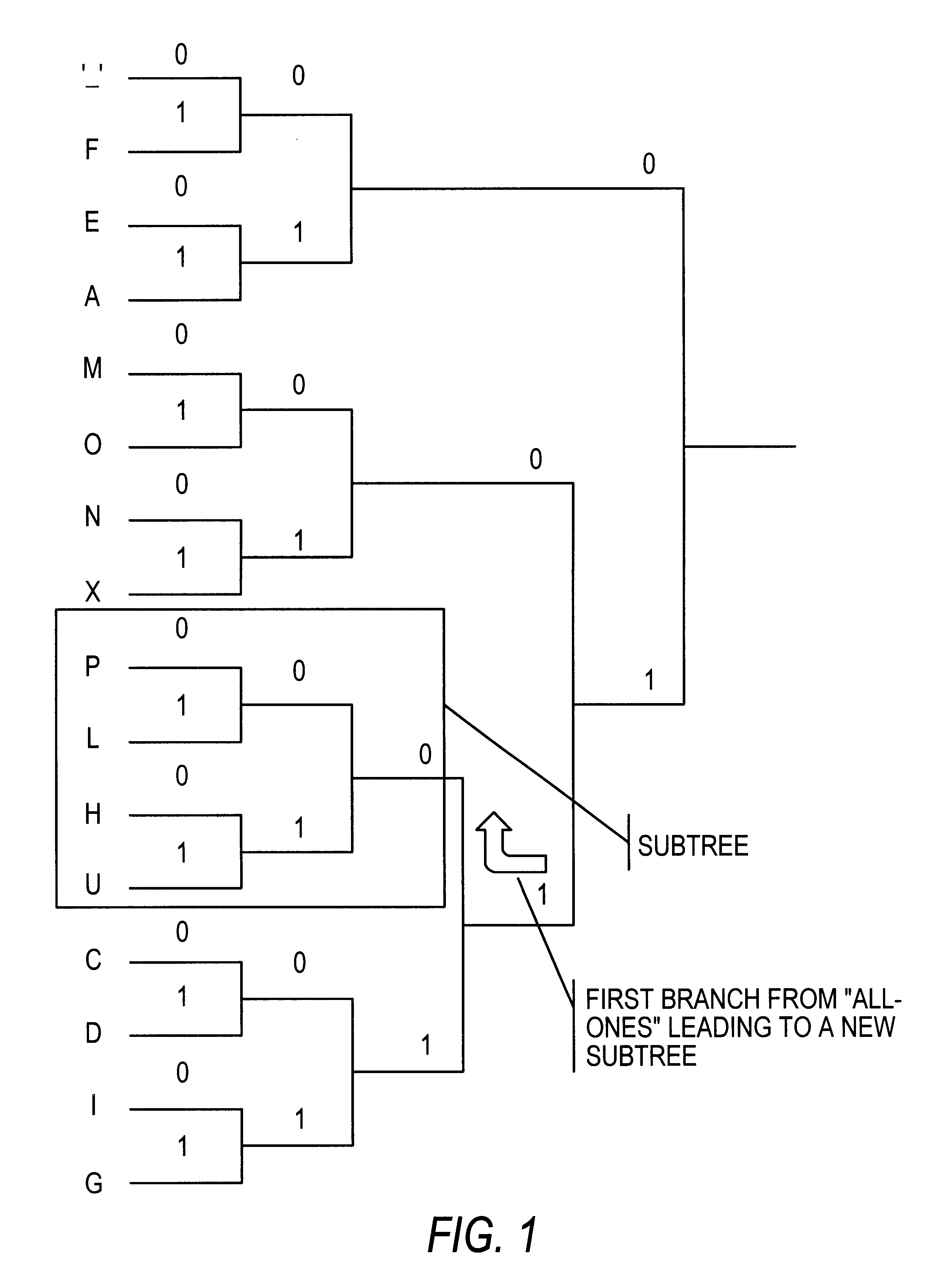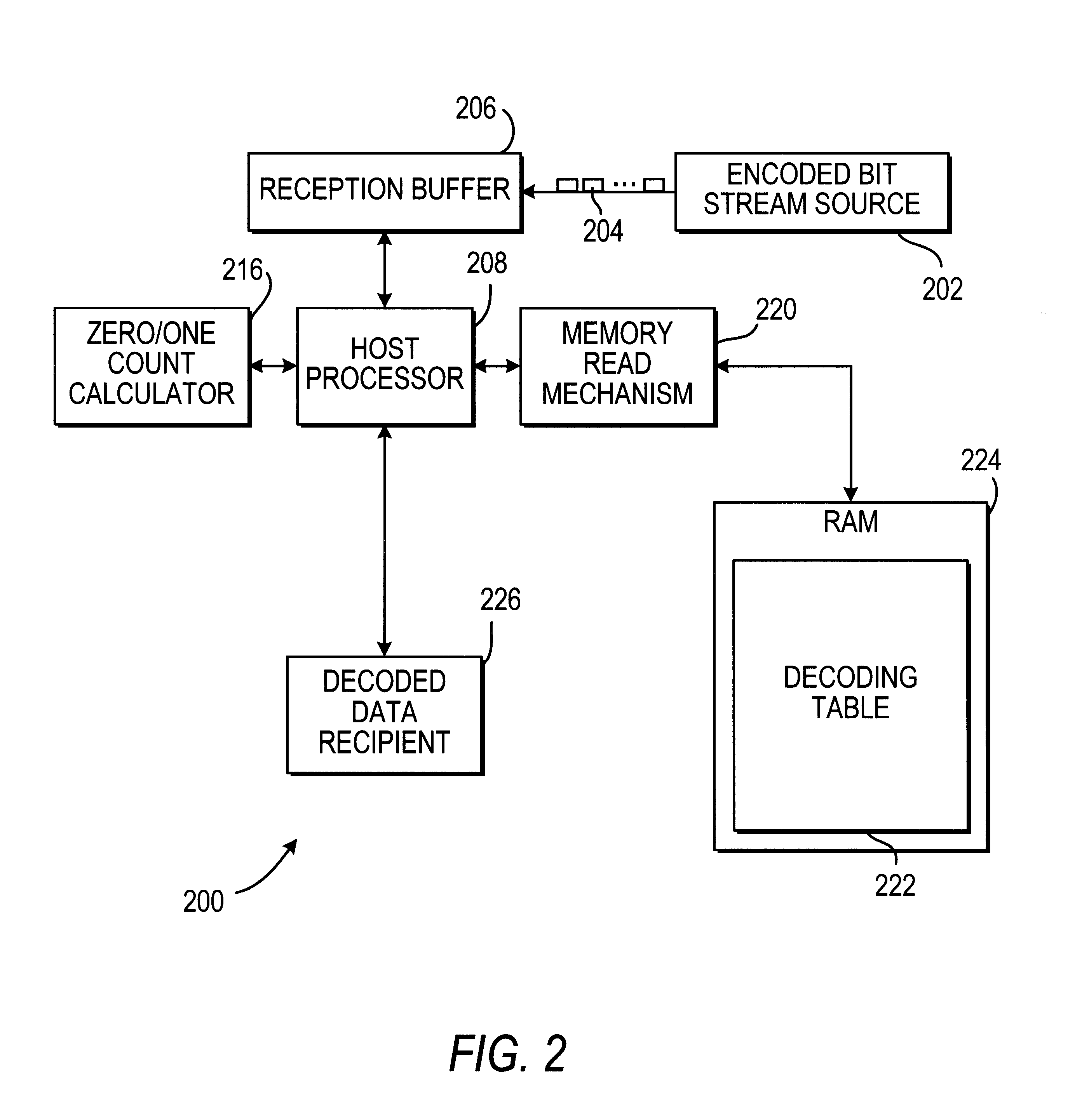Apparatus and method for decoding Huffman codes using leading one/zero string length detection
a technology of leading one/zero string length and code, applied in the field of data compression, can solve the problems of requiring extra memory for pointers, the decoder cannot know the length of an incoming code word, and the efficient implementation of cam schemes is fas
- Summary
- Abstract
- Description
- Claims
- Application Information
AI Technical Summary
Problems solved by technology
Method used
Image
Examples
Embodiment Construction
This invention provides a fast and memory-efficient way of decoding a Huffman code stream. Decoding is based on the detection of bit runs, i.e., "10000 . . . " and "1111 . . ."-strings, in the beginning of the code word. After the length of first n bits of consecutive ones or zeros is found, the remaining bits in the code word (forward from the n+1 position) are again searched for continuous streams of ones or zeros, until it can be decided that there are only a few bits left in the code word, at which point, they can be used to look up the corresponding symbol from a memory table. This process can be visualized as travelling maximum lengths of "straight runs" at in a Huffman tree and stopping every time that a "turn" leading to new "subtree" is detected. Advantageously, a code word is processed at a minimum of two bits at a time (leading zero or one and the following bit that indicated "turn").
For example, in FIG. 1, the decoding process for letter "P.fwdarw.11000" would roughly pr...
PUM
 Login to View More
Login to View More Abstract
Description
Claims
Application Information
 Login to View More
Login to View More - R&D
- Intellectual Property
- Life Sciences
- Materials
- Tech Scout
- Unparalleled Data Quality
- Higher Quality Content
- 60% Fewer Hallucinations
Browse by: Latest US Patents, China's latest patents, Technical Efficacy Thesaurus, Application Domain, Technology Topic, Popular Technical Reports.
© 2025 PatSnap. All rights reserved.Legal|Privacy policy|Modern Slavery Act Transparency Statement|Sitemap|About US| Contact US: help@patsnap.com



